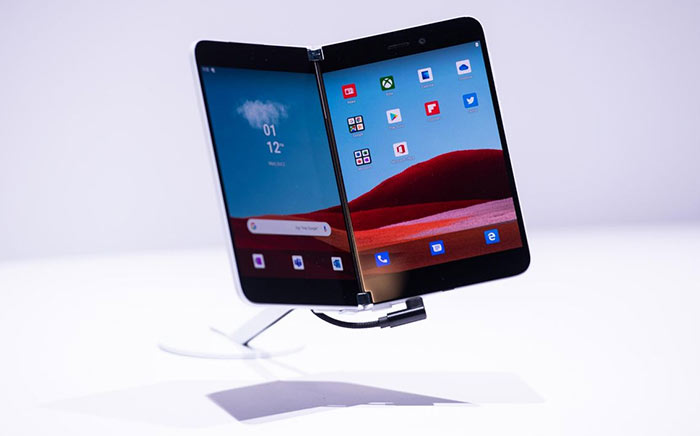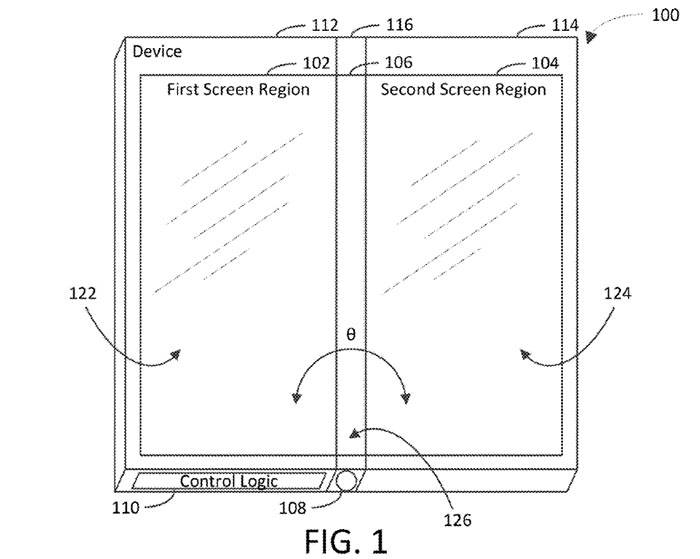A Microsoft patent has been unearthed which illustrates one possible solution to eliminating or minimising the gap between folding screens. The answer, which could provide a more seamless experience for users of upcoming devices like the Surface Neo and Surface Duo, is to simply insert a screen into the gutter area - a third screen to fill the space where bezels and gaps once lived uneasily.

Microsoft bucked the trend somewhat by unveiling upcoming foldable devices with twin separate screens - rather than betting on nascent flexible/folding screen technology like Samsung, Motorola and others. However the gaps between the screens are considerable which will irk some, depending upon mode and content displayed on these devices. In particular 'full screen' use won't be optimal, though using the twin screens for multitasking or in clamshell mode (content - soft keyboard) will undoubtedly be pleasant.

In its patent Microsoft says that a third screen can be used in the hinge area to provide a more expansive unified view. There is an interesting alternative put forward too - the middle screen could be used for "virtual controls, interface elements, notifications, bookmarks," and more.
The middle control screen becomes even more useful if the proposed folding device folds outwards, with the third screen then exposed as the 'spine of the book'. In this configuration the name of the third screen in the patent makes more sense - the edge screen.

As is usual for patents we see like this, it is hard to guess whether the plans will ever make it to a shipping consumer device implementation. Another thing working against the progress of this concept is that folding screen tech from the likes of Samsung, LG and others will likely mature to become cheaper, more durable and better. The Microsoft patent in the spotlight was filed in July last year.
Source: Free Patents Online (PDF link) via WindowsLatest.













